calsfoundation@cals.org
Conscription
Conscription is a term used to describe involuntary enlistment into military service. Conscription has been used on numerous occasions in Arkansas, most notably during the Civil War, World War I, World War II, and the Vietnam War. Conscription is also known as the draft.
Conscription was first used in Arkansas during the Civil War. After the Battle of Pea Ridge in March 1862, most Confederate forces in the state moved east of the Mississippi River. Major General Thomas Hindman took command of the Trans-Mississippi in May and faced the possibility of a Federal army under Major General Samuel Curtis capturing Little Rock (Pulaski County). Hindman implemented the Confederate Conscription Act that was passed on April 16, 1862. It called for all healthy white men between the ages of eighteen and thirty-five and not in restricted war-related occupations to join the military for a period of three years. Troops already in the army had their enlistments lengthened to three years. The original act only allowed for troops to be raised for existing units. With almost all Arkansas units serving east of the Mississippi, Hindman ignored that part of the law and raised new regiments. Other units from Texas were used to supplement these newly raised regiments, and Hindman led the forces at the Battle of Prairie Grove on December 7, 1862. He also limited the occupations that were exempted from service and ended a provision that allowed men to hire substitutes.
The public response to conscription was not popular, and hundreds of men fled the state in an effort to avoid serving. A group of conscripts in Magnolia (Columbia County) marched out of their induction camp in protest. Many men who were forced to serve from pro-Unionist areas of the state deserted as quickly as possible, and some joined Federal military units. In order to obtain more conscripts, the act was amended in September with the upper age extended to forty-five. Another amendment that was passed the following month exempted one white man for a farm that had at least twenty slaves. This allowed significant slaveholders to be exempted from service, leading to even more public unrest. In 1864, the age limits were amended again, with men as young as seventeen and as old as fifty required to join the army.
Hindman also allowed men to join irregular units to disrupt Federal operations in their area, allowing these men to serve without joining the regular Confederate army. This led some men already in the army to return home to serve near their families.
Men who were conscripted late in the war served without pay as the army struggled to pay the troops already in service. Confederate units often forcibly conscripted military-age men when they moved into an area. The number of troops from Arkansas who were conscripted during the war cannot be determined.
At the conclusion of the war, conscription ended in the United States, although the Union army also used conscripts during the conflict. With minimal Federal control in the state during much of the war, Arkansas Unionist units were raised using volunteers. Conscription was not used in the state to fill these regiments. An all-volunteer army was used during the Indian Wars of the late nineteenth century, and a combination of regular army and volunteer units served in the Spanish-American and Philippine-American wars.
With the United States’ entry into World War I, the Selective Service Act of 1917 was passed. In an effort to avoid the draft riots that occurred in the north during the Civil War, substitutes were no longer accepted, and several categories were established to protect workers in a variety of occupations. In the first registration, 199,857 Arkansan men aged twenty-one to thirty registered. Only about 600 eligible men in the state did not register during the first registration.
As the needs of the military grew, the age limits of the act were expanded, and the final registration was for men between the ages of eighteen and forty-five. Around 8,732 men from Arkansas evaded the draft or deserted during the war. Several instances of violence occurred across the state as men refused to report for duty and local law enforcement agencies tried to apprehend them. Men were killed in Polk, Searcy, Logan, and Cleburne counties as fighting broke out between conscription resisters and local sheriffs. The Arkansas National Guard sent troops to help quell the rebellion in Cleburne County, while Newton County’s resisters were largely supported by the community.
In eastern Arkansas, many planters worked to prevent their tenant farmers from being drafted. The families of men drafted into the army received a pay allotment, allowing them to move away from the plantations with some degree of financial security. In order to keep men in the fields and prevent entire families from departing, planters obtained deferments for many of their workers.
In 1940, Congress passed the Selective Training and Service Act, creating a peace-time draft as World War II raged in Europe. All members of the Arkansas congressional delegation voted for the act. Local draft boards were established, and men were required to register for possible service. The draft continued after the United States entered the war in 1941.
The profits of large-scale plantations in eastern Arkansas once again began to suffer from a lack of labor as the draft began to take workers from the fields. The planters pushed a law through Congress in 1942 that deferred all farm workers as long as they kept their jobs and did not move into industrial employment. Planters were able to influence local draft boards and issue deferments to workers who agreed to work for a set time period at a rate established by the planter.
After several modifications, all men between the ages of eighteen and sixty-five were required to register. By 1945, more than 194,600 men from Arkansas had been inducted into the military from a 1940 male population of 982,916. Many men in the state opposed the war and worked to stay out of the military, but violence did not erupt across the state as it had during World War I. Conscientious objectors from across the country, including many Christadelphians, served at Camp Magnolia in Columbia County, where they worked on soil and water conservation projects and tested items for the military.
The peacetime draft continued after the end of World War II, and the number of men conscripted into the military increased with the Korean War in 1950. The number of men selected for service changed from year to year but greatly increased during the Vietnam War. With changes in the Selective Service Act, college students could avoid service. Between 1964 and the end of conscription in 1973, more than 2.2 million men were drafted in the United States. Another 15.4 million received deferments.
Opposition to the Vietnam War led Congress and President Richard Nixon to allow the Selective Service Act to expire in 1973, and the United States adopted an all-volunteer military force. Men age eighteen to twenty-six are required to register with the Selective Service, but conscription has not been used since 1973.
For additional information:
Morris, Cynthia. “Arkansas’s Reaction to the Men Who Said ‘No’ to World War II.” Arkansas Historical Quarterly 43 (Summer 1984): 153–177.
Perkins, J. Blake. Hillbilly Hellraisers: Federal Power and Populist Defiance in the Ozarks. Champaign: University of Illinois Press, 2018.
Roberts, Bobby. “General T. C. Hindman and the Trans-Mississippi District.” Arkansas Historical Quarterly 32 (Winter 1973): 297–311.
Robertson, Brian. “Men Who Would Die by the Stars and Stripes: A Socio-Economic Examination of the 2nd Arkansas Cavalry (US).” Arkansas Historical Quarterly 69 (Summer 2010): 117–139.
Sealander, Judith. “Draft Resistance in Arkansas to World War I” Ozark Historical Review 2 (1973): 1–12.
Stephens, Phillip. “Resistance to the Great War in Arkansas.” In To Can the Kaiser: Arkansas and the Great War, edited by Michael D. Polston and Guy Lancaster. Little Rock: Butler Center Books, 2015.
Willis, James. “The Cleburne County Draft War.” Arkansas Historical Quarterly 26 (Spring 1967): 24–39.
Woodruff, Nan. American Congo: The African American Freedom Struggle in the Delta. Cambridge, MA: Harvard University Press, 2003.
David Sesser
Henderson State University
 Military
Military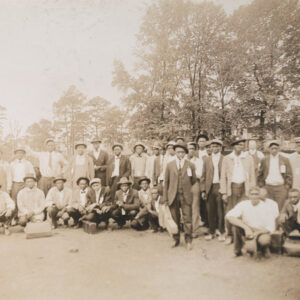 African American WWI Draftees
African American WWI Draftees 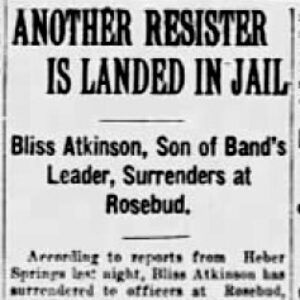 Cleburne County Draft War Article
Cleburne County Draft War Article 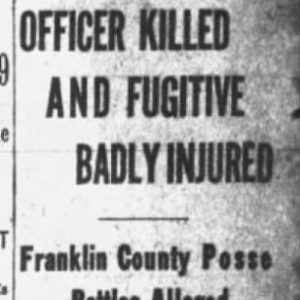 Logan County Draft War Article
Logan County Draft War Article 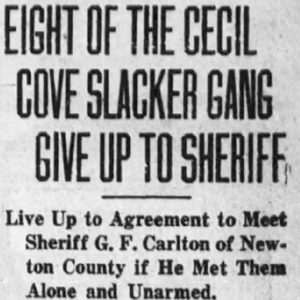 Newton County Draft War Article
Newton County Draft War Article  Polk County Draft War Article
Polk County Draft War Article 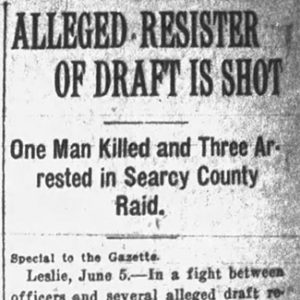 Searcy County Draft War Article
Searcy County Draft War Article 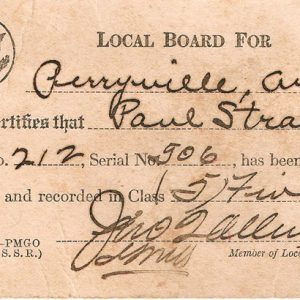 WWI Draft Card
WWI Draft Card 




Comments
No comments on this entry yet.